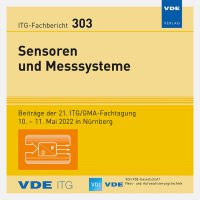A Fast, Ultra-Low Noise Current Amplifier with Linear Range from Femtoamperes to Nanoamperes
Konferenz: Sensoren und Messsysteme - 21. ITG/GMA-Fachtagung
10.05.2022 - 11.05.2022 in Nürnberg
Tagungsband: ITG-Fb. 303: Sensoren und Messsysteme
Seiten: 4Sprache: EnglischTyp: PDF
Autoren:
Wendt, Cornelius; Bohnhorst, Alexander; Zimmermann, Stefan; Kirk, Ansgar T. (Leibniz University Hannover, Institute of Electrical Engineering and Measurement Technology, Department of Sensors and Measurement Technology, Hannover, Germany)
Inhalt:
In a large number of sensor principles, small currents are being measured and the performance of the current amplifier has a decisive influence on the performance of the entire measurement system. Usually current amplifiers are designed as a so-called resistive transimpedance amplifier, i.e. the current to be measured is converted into a voltage via a resistor. The higher its resistance, the lower the noise current density caused by thermal noise. At the same time, however, a higher resistance reduces the maximum measurable current at a given output voltage and the maximum bandwidth at a given parasitic capacitance. An alternative are capacitive transimpedance amplifiers, which integrate the current to be measured on a capacitor, corresponding to a nearly infinite resistance. However, leakage currents and charge injection of the switches necessary for resetting the capacitor in this setup result in new sources of error. These errors can be compensated successfully by the novel active reset architecture presented here, which actively regulates the voltage across the capacitor to zero during reset. This enables the design of a current amplifier with a unique combination of ultra-low noise, wide linear dynamic range and high bandwidth. A demonstrator of the current amplifier achieves a standard deviation of the measured current of 3.4 fA at a 3-dB bandwidth of 48 Hz, which corresponds to a noise current density of 0.49 fA/√Hz assuming a uniform distribution over the frequency spectrum. Moreover, the demonstrator achieves excellent zero-point stability even without temperature control. Over a period of several days, the zero-point remained within ± 500 aA.


